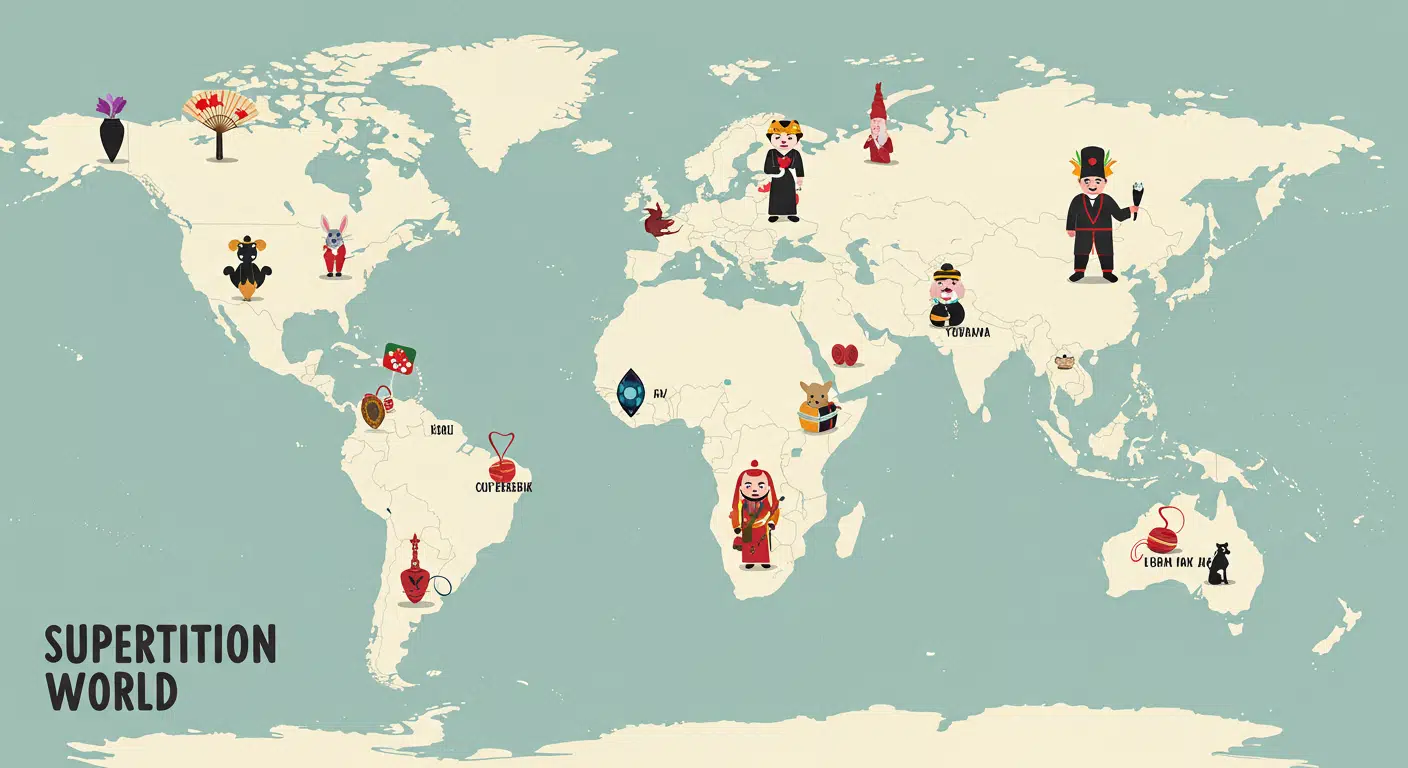10 Weirdest Superstitions from Around the World
Across cultures and time periods, superstitions reflect deeply held beliefs about luck, purity, danger, and the supernatural. While often rooted in historical anxieties or symbolic associations, some stand out for their peculiarity and endurance. Below are ten of the strangest superstitions observed globally—each revealing unique intersections between folklore, language, and social norms.
- Chewing Gum Turns to Dead Flesh (Turkey)
In Turkish folklore, chewing gum after dark is believed to turn into rotting human flesh inside the mouth. While lacking any scientific basis, this superstition may have emerged to discourage loud or disruptive behavior at night or to associate chewing with decay and mortality. Its enduring strength lies in its viscerally disturbing imagery, which reinforces social control through discomfort. - Tucking Thumbs in Cemeteries (Japan)
In Japan, people often hide their thumbs when passing cemeteries to protect their parents from death. The custom is based on linguistic play—oyayubi (“thumb”) translates as “parent finger.” By concealing the thumb, individuals symbolically shield their parents from malevolent spirits associated with graves. The act demonstrates how wordplay can translate into physical ritual, especially when paired with family-oriented values. - Tetraphobia: Fear of the Number 4 (China)
In China and other East Asian societies, the number four (sì) is widely avoided because it closely resembles the word for death (sǐ). Tetraphobia influences building architecture (e.g., omitting 4th floors), license plates, phone numbers, and wedding dates. This superstition underscores the power of homophonic language in shaping behavior, especially in societies that place high importance on symbolic numerology. - Sleeping with Fans On (South Korea)
“Fan death” is a widely held belief in South Korea that sleeping with an electric fan running in a closed room can cause death—through suffocation or hypothermia. This superstition gained traction in the 20th century, possibly as a public health warning about energy usage or respiratory risks. Despite scientific debunking, warnings still appear on fan labels, showing the cultural entrenchment of the myth. - Throwing Pots for Luck (Gibraltar)
On New Year’s Eve in Gibraltar, residents throw small clay pots filled with grass from their windows. The superstition holds that the height of the grass determines one’s luck for the coming year—tall grass signals prosperity, while short grass warns of hardship. The ritual, rooted in agricultural symbolism, reflects the human tendency to seek visible signs of future fortune through tactile actions. - Menstruation Taboos (India, Nepal, and Beyond)
In various cultures, menstruating women face restrictive taboos that limit their physical movements, social roles, or access to shared spaces. In some rural parts of India and Nepal, women are barred from entering kitchens, temples, or even their own homes during menstruation. These beliefs stem from ancient ideas of ritual impurity and bodily pollution. While increasingly challenged by activists and reformers, such practices remain entrenched in some communities. - “Rabbit, Rabbit” Rituals (UK/US)
A superstition common in English-speaking countries involves saying “Rabbit, rabbit” or “White rabbit” first thing on the first day of the month to ensure good luck. The origins are unclear but trace back to early 20th-century British folklore. The tradition may relate to the rabbit’s historical role as a fertility and fortune symbol, and its continued popularity reflects the appeal of harmless, habitual rituals. - Yo-Yos Bring Drought (Syria)
In 1933, yo-yos were banned in Syria under the belief that their use caused drought. The reasoning likely stemmed from symbolic thinking: the yo-yo’s up-and-down motion was thought to “draw away” or interfere with rainfall. Though the ban was short-lived, it illustrates how new or unfamiliar technologies can become scapegoats during environmental crises. - Left-Handedness as Unlucky (Ancient Rome and Beyond)
In Roman culture, the left hand was associated with misfortune and bad omens—the Latin word sinistra, meaning left, also gave rise to the English “sinister.” This stigma persisted for centuries in Western education, where left-handed children were often forced to write with their right hand. While modern science recognizes handedness as neurologically neutral, social discomfort with left-handedness still lingers in some parts of the world.
